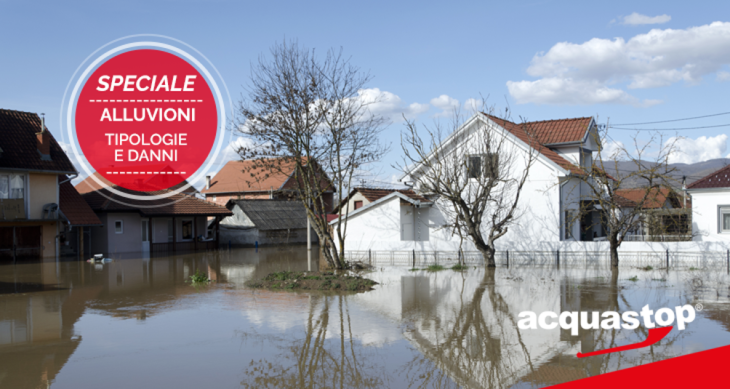The topic is very broad because the effects caused by climate change on the territory, and especially on the Italian one, are multiple; in this article we will examine only some situations and also evaluate their effects.
What is flood risk and how is it assessed?
Flood risk is the likelihood that an area will experience flooding following heavy rainfall or rising river levels. Floods can cause significant damage to people, property and the environment.
To evaluate the flood risk of a given area it is necessary to collect and analyze data relating to the hydrology of the area itself and the vulnerability of its infrastructures to evaluate possible damage from flooding. It is also important to understand what prevention and mitigation measures are already in place and what resources are available to the area to deal with the event. For example, one aspect to evaluate is the presence of anti-flooding bulkheads in the buildings most at risk or which require particular protection.
Nowadays, the areas at risk of flooding have increased compared to previous years. Many streams and canals considered “harmless” are today capable of pouring a large quantity of water onto the ground in a short time. The cause is mainly to be found in the increasingly frequent intense rainfall, which also makes sewer systems and drainage channels dangerous. In these situations the streets transform into real torrents close to the homes.
We can state that today the areas at risk have increased compared to previous years, many streams and canals which in the past never threatened nearby buildings and lands, today are unable to contain the large quantity of water that is poured onto the ground in a short time from this kind of intense rainfall and the same can be said for sewer systems and drains. In these situations the streets transform into real torrents close to the homes.
Even coastal areas today are subjected to greater risks due to the rise in sea levels and the greater force with which storm surges manage to push inland.

What are the different types of flooding?
The events previously described give rise to different types of flooding. In some cases the water can rise slowly while in others, caused for example by the flooding of a watercourse or the breakdown of the sewerage system, the level rises very quickly. Another aspect to consider, again in relation to the nature of the flooding, is the movement of the water. The rise in level, slow or fast, can be without waves while in other cases it can occur with waves with considerable energy, difficult to absorb and contain.
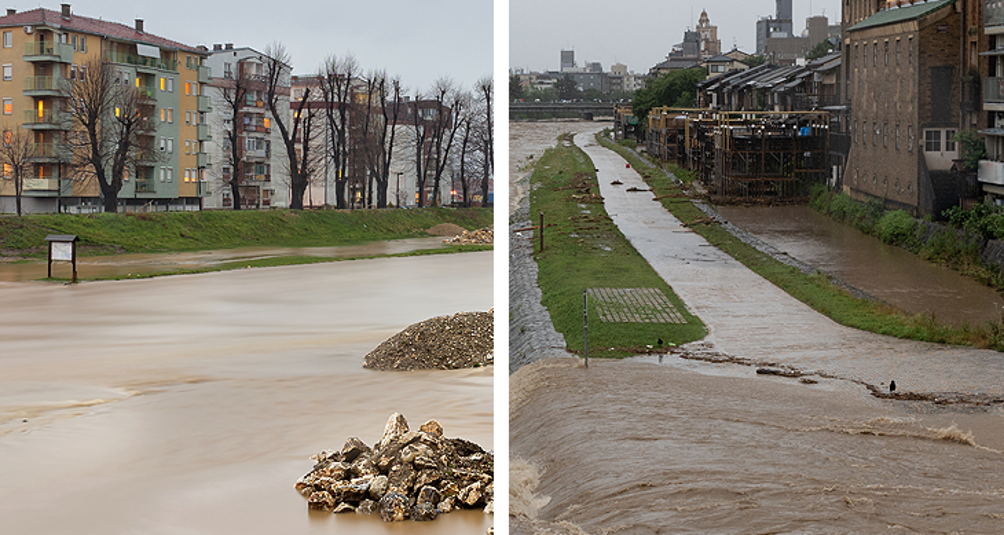
- Flash flooding: This type of flooding occurs due to heavy rain , river flooding , or land slides that cause embankments or dams to break. In these cases the water rise is rapid and carries a large quantity of debris.
- Coastal flooding: Occurs due to rising sea levels and tides, particularly during storms or hurricanes. In addition to the increase in water levels, this type of phenomenon is worrying due to the force with which the waves hit the buildings.
- Submersible flooding: Occurs when water penetrates an area such as a cellar or basement leading, in the worst cases, to complete flooding of the premises.
- Lowland flooding: Occurs due to the accumulation of water in a low-lying area that is unable to properly drain the excess water . The water level rises slowly but remains for a long time.
- Urban flooding: Occurs due to urban infrastructure such as roads and sewer systems that are unable to handle the flow of excess water during heavy rainfall. Sewage water poses a serious health threat as it contains harmful bacteria and viruses, parasites, chemical toxins and can cause mold and mildew growth.
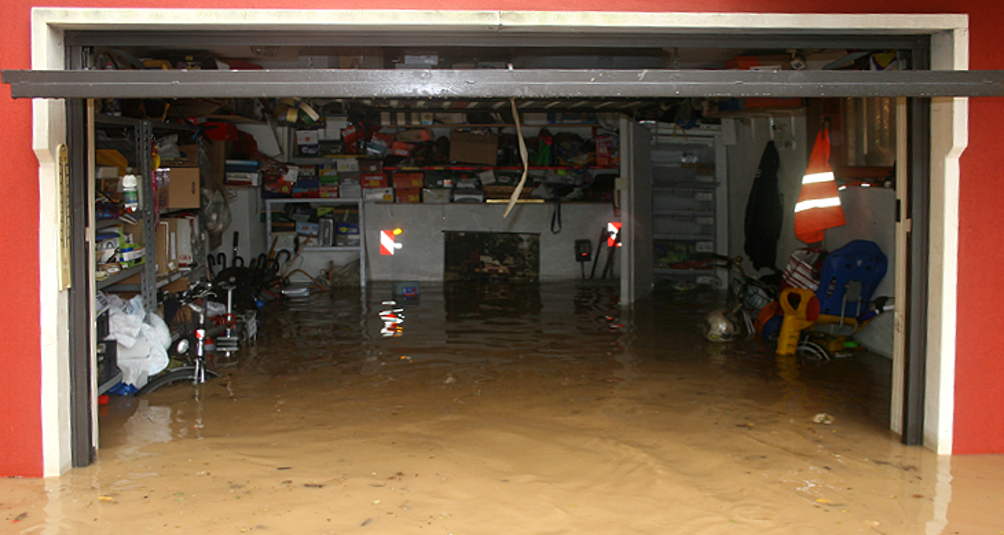
What damage can flooding cause?
Even a few centimeters of flooding can cause significant damage to property, whether private or commercial. Depending on the speed with which the waters recede and the remediation times, the damage caused may even be irreversible. The damage caused by flooding can be of the following types:
- Damage to structures: Water can penetrate walls, floors and ceilings causing mold and warping of structures.
- Damage to electrical systems: Water can damage electrical circuits and cause short circuits, which are safety hazards.
- Furniture damage: Furniture can warp or rot from water, rendering it unusable.
- Fabric damage: Fabrics such as carpets, curtains and upholstery can warp or rot from water, rendering them unusable.
- Damage to health: Mold and bacteria that grow in the water can cause health problems, such as headaches, eye irritation and breathing difficulties.
Flooding is always a serious and deleterious event. Even smaller ones can cause significant economic damage: furnishing elements such as carpets or parquet floors are immediately compromised, but above all the medium and long-term effects must be considered. The water, in fact, is never completely eliminated but soaks the walls and stagnates under the flooring, yellowing the walls, generating mold and deteriorating even the most resistant floors.
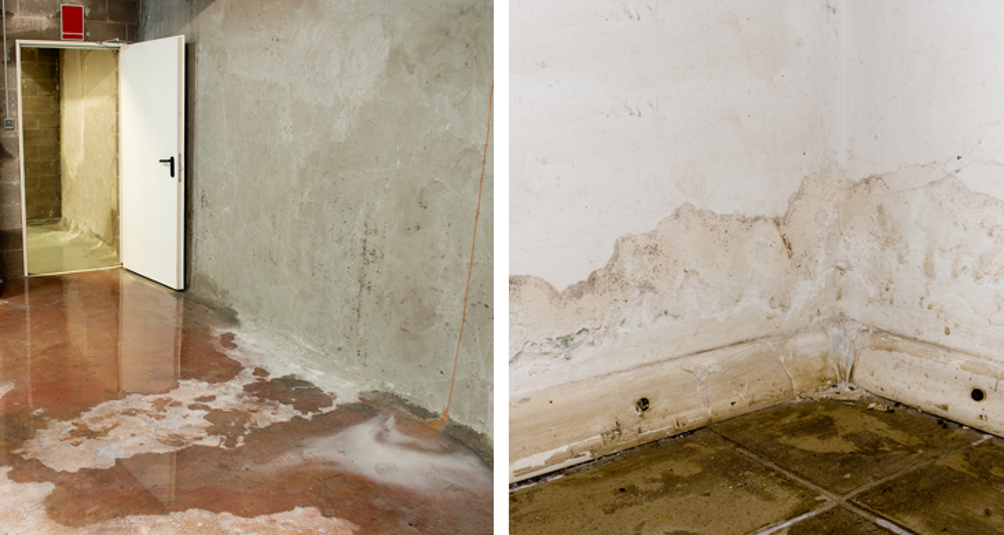
The damage to health should absolutely not be underestimated . The incoming water contains dozens of harmful substances, billions of microorganisms, bacteria and larvae that persist in the premises for a long time. Flood water can be contaminated with bacteria such as salmonella and shigella , which cause gastrointestinal infections, fever and diarrhea. It also promotes the proliferation of mold and fungi, responsible for problems such as headaches, eye irritation and breathing difficulties.
In some cases the water may contain toxic chemicals such as cleaning chemicals and detergents that can cause irritation to the skin and mucous membranes. Finally, it can be a vehicle for animal-borne diseases such as leptospirosis.
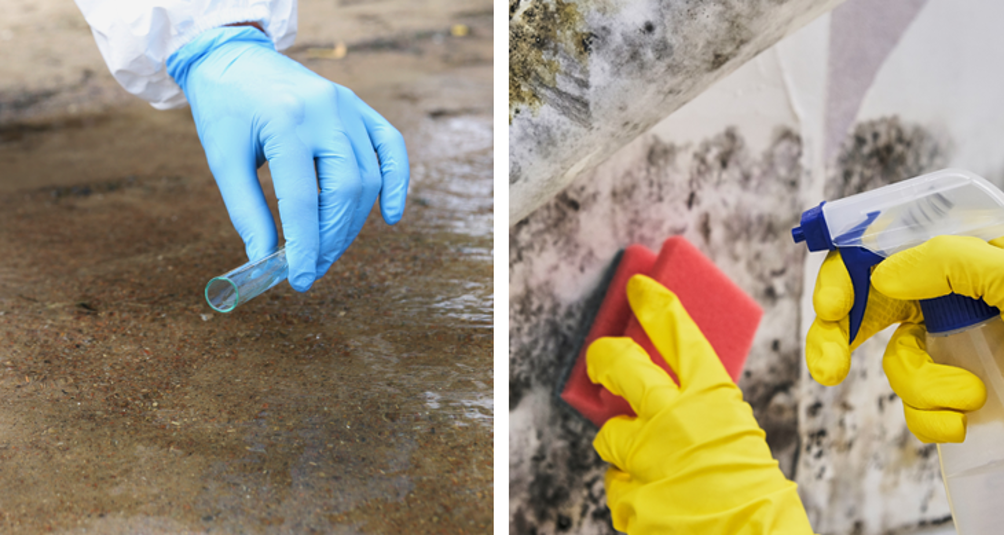
How do you restore a room after a flood?
Cleaning up a flooded room requires appropriate precautions to protect health and prevent further contamination. First of all, it is advisable to avoid contact with water by wearing gloves, masks and protective glasses and to remove the water as quickly as possible using pumps and vacuum cleaners. After the water has been removed it is necessary to clean and disinfect the room with chlorine-based solutions or other disinfectants.
All materials and objects that have been in contact with water must be removed, cleaned or disposed of appropriately. Before living in the room again it is important to monitor the air quality, especially in the presence of children or elderly people.

